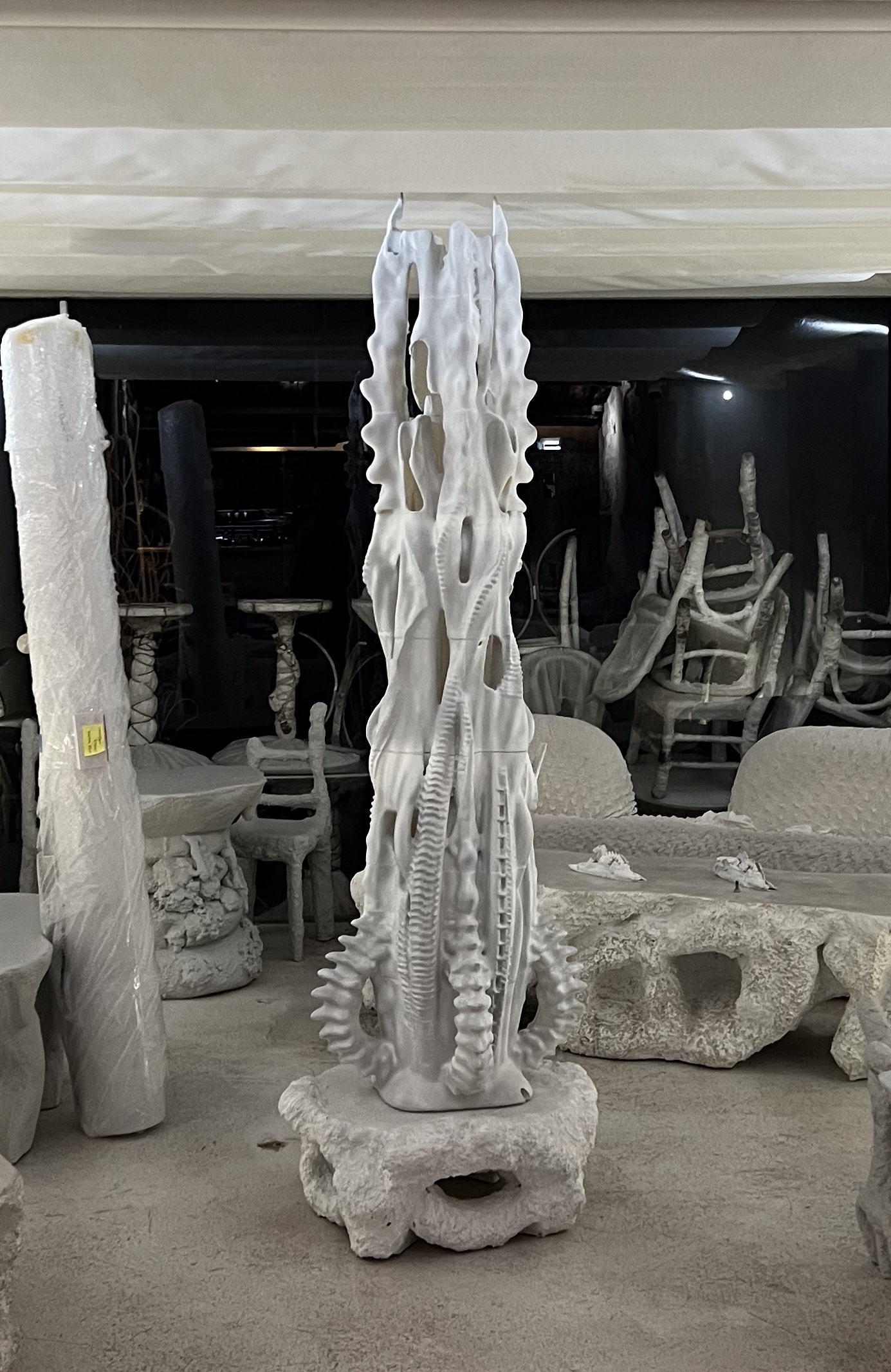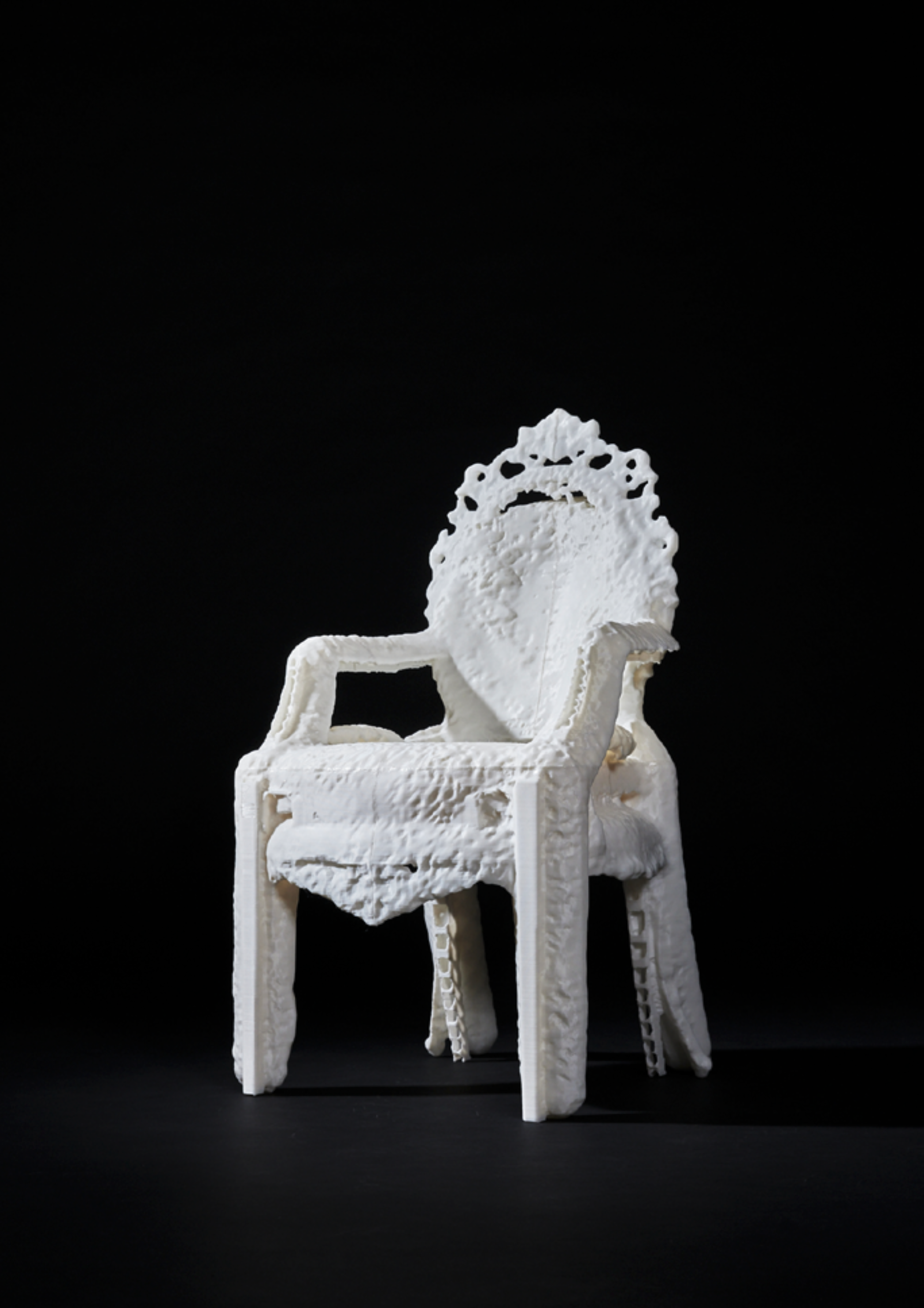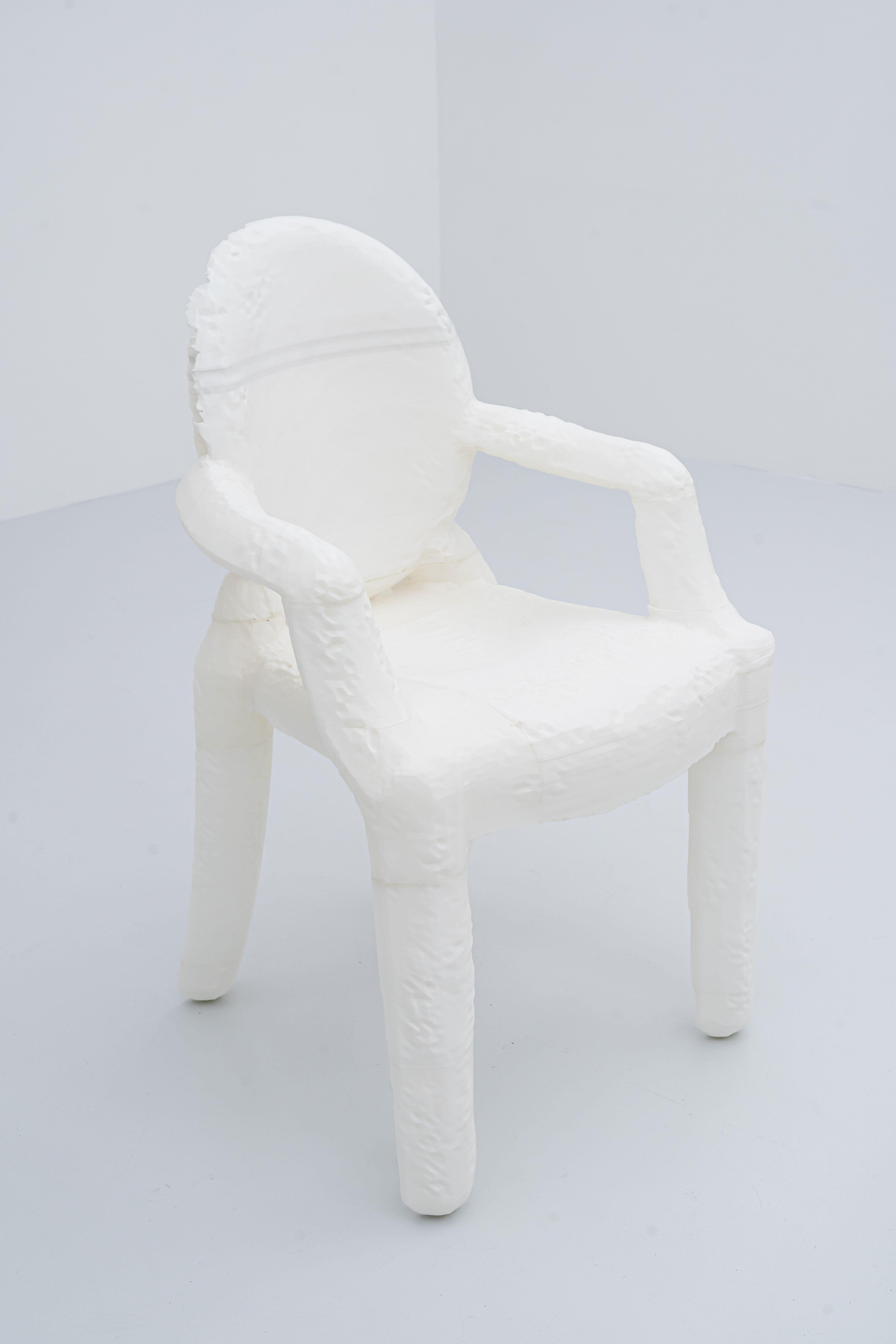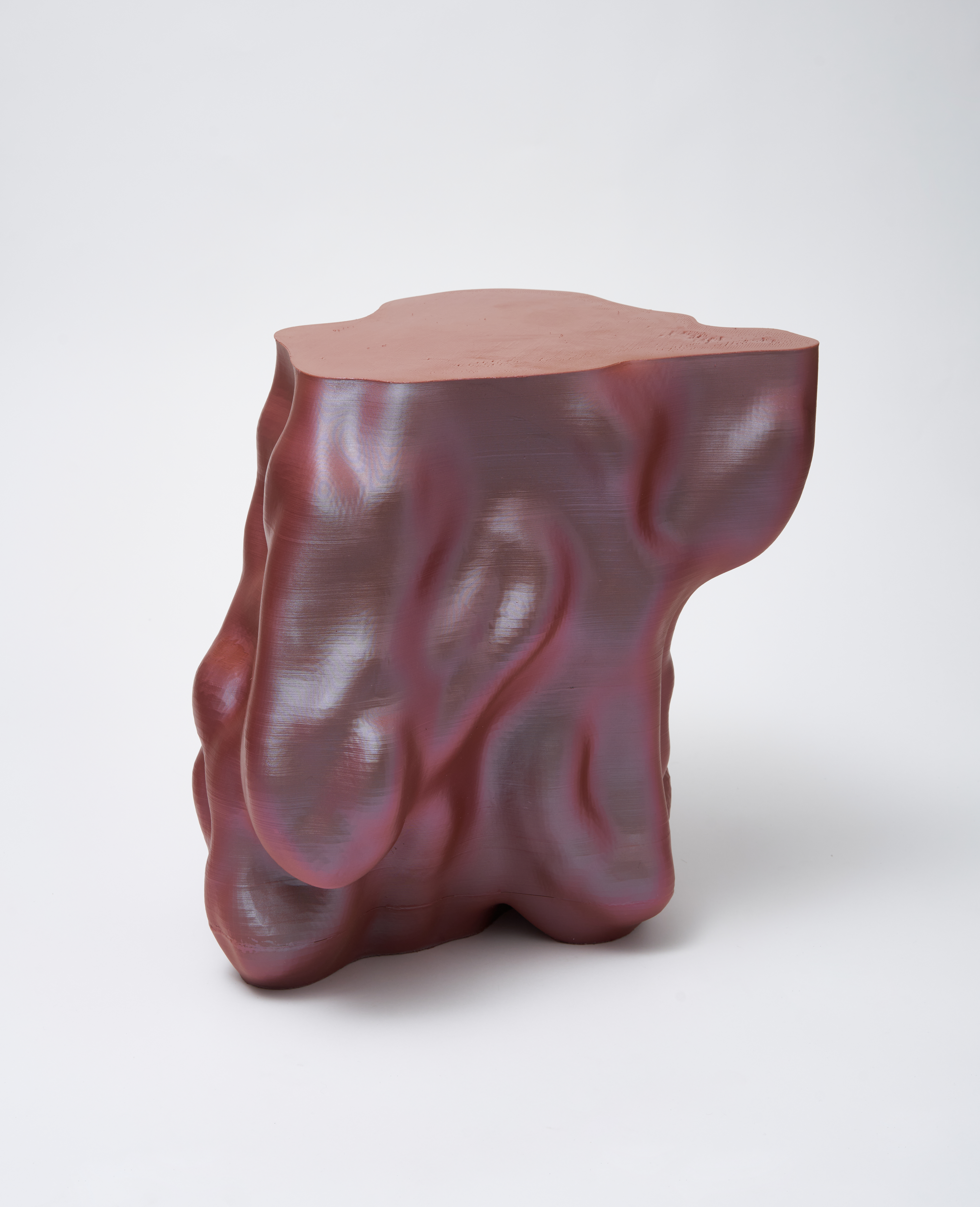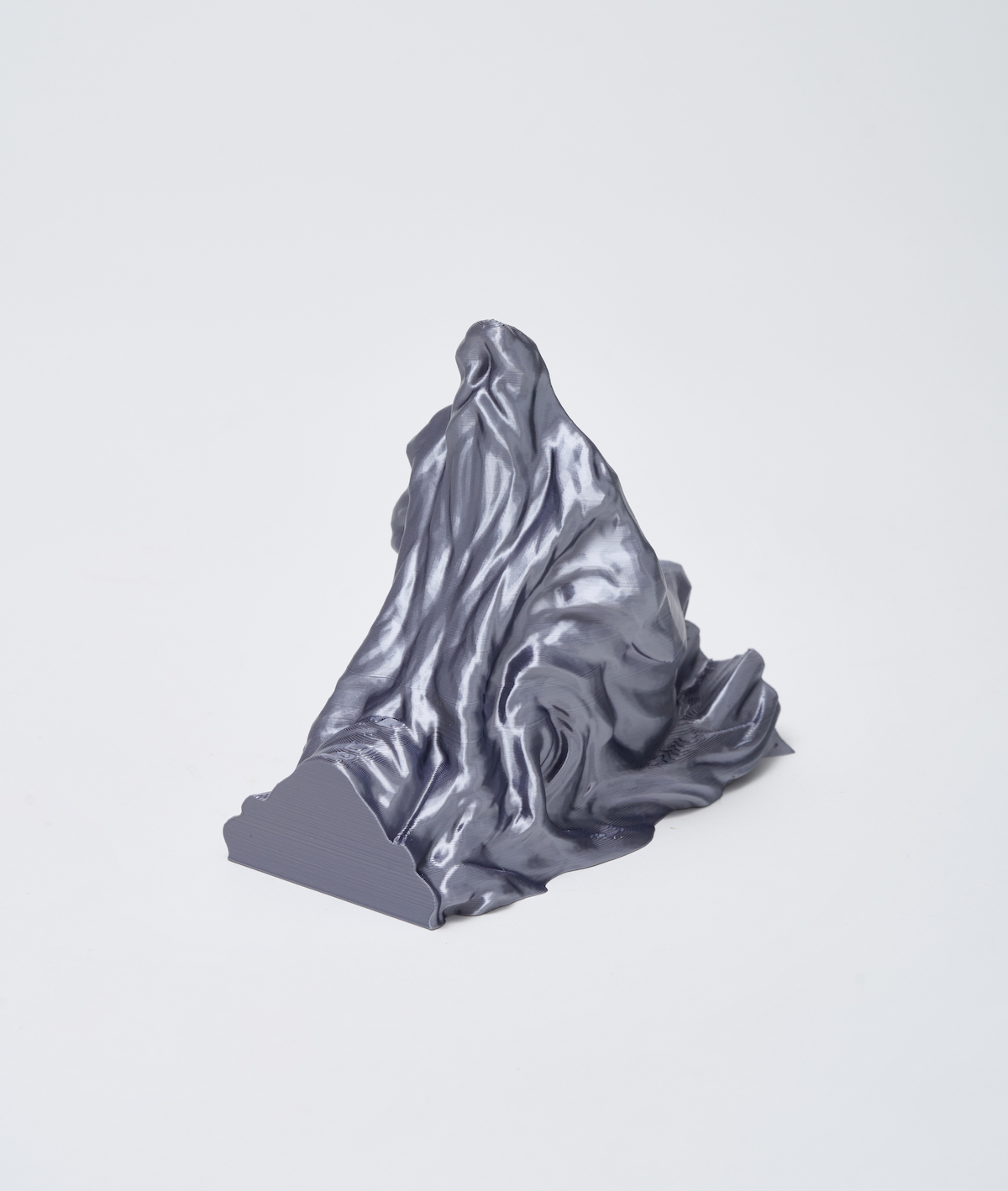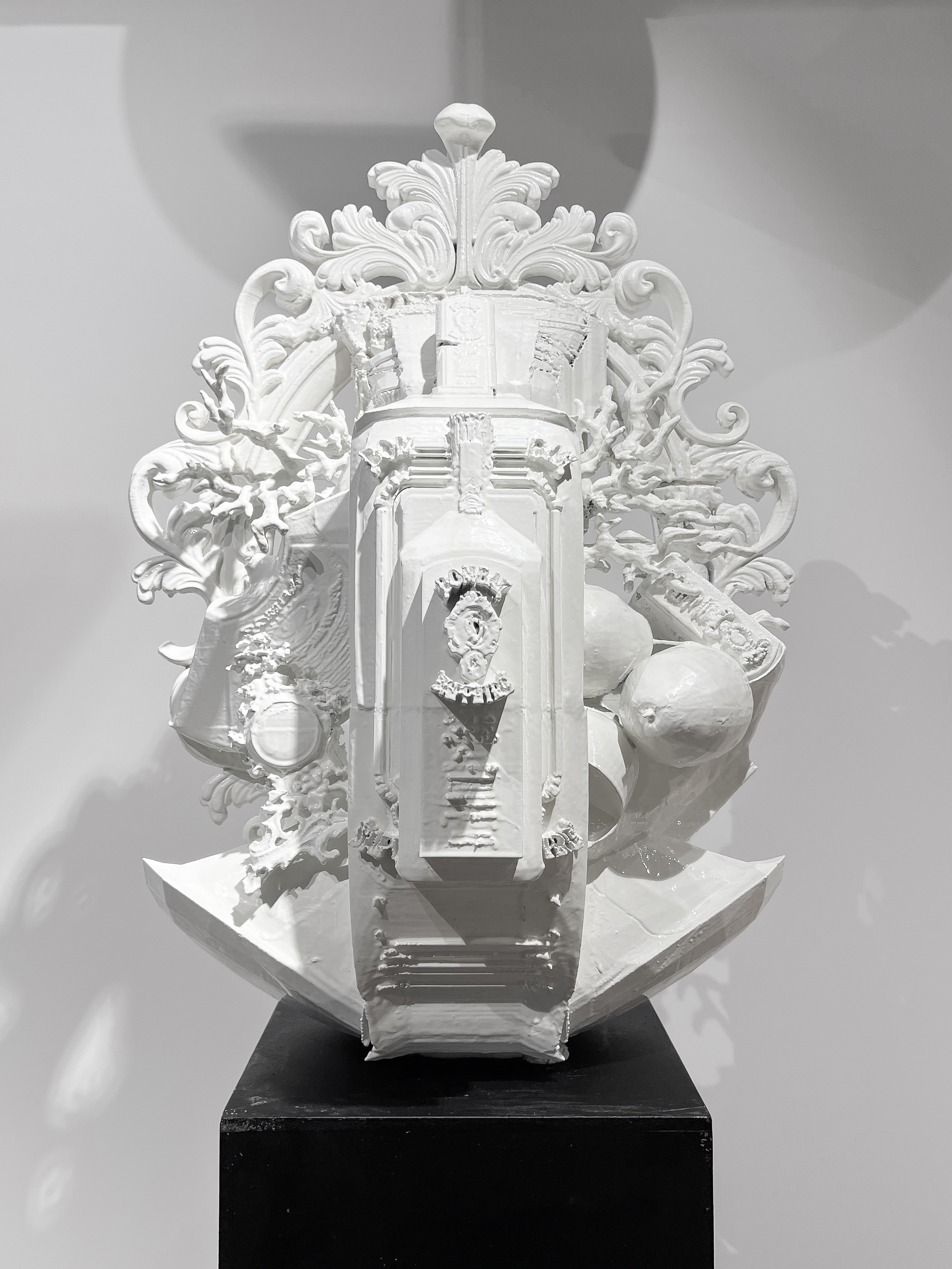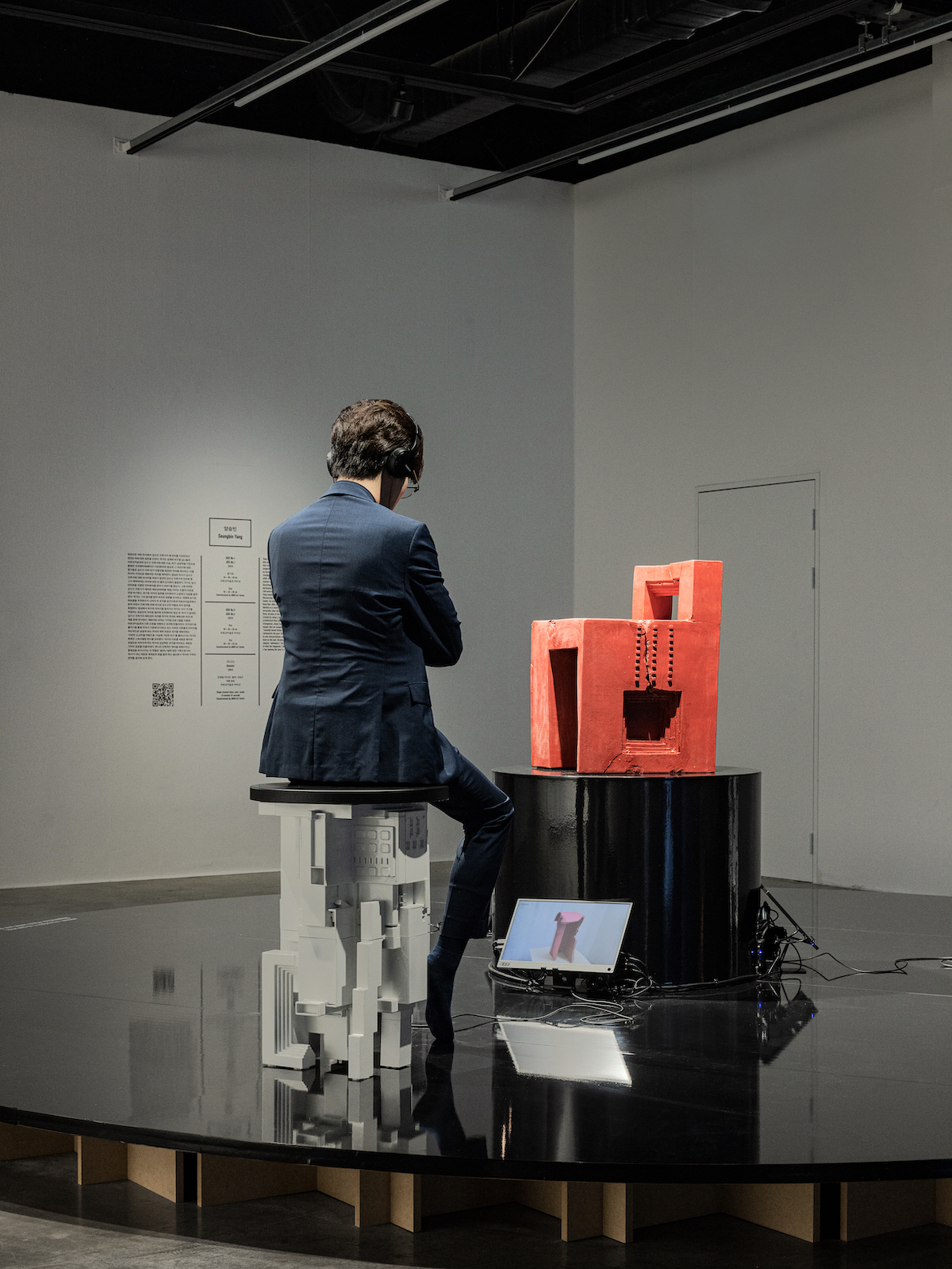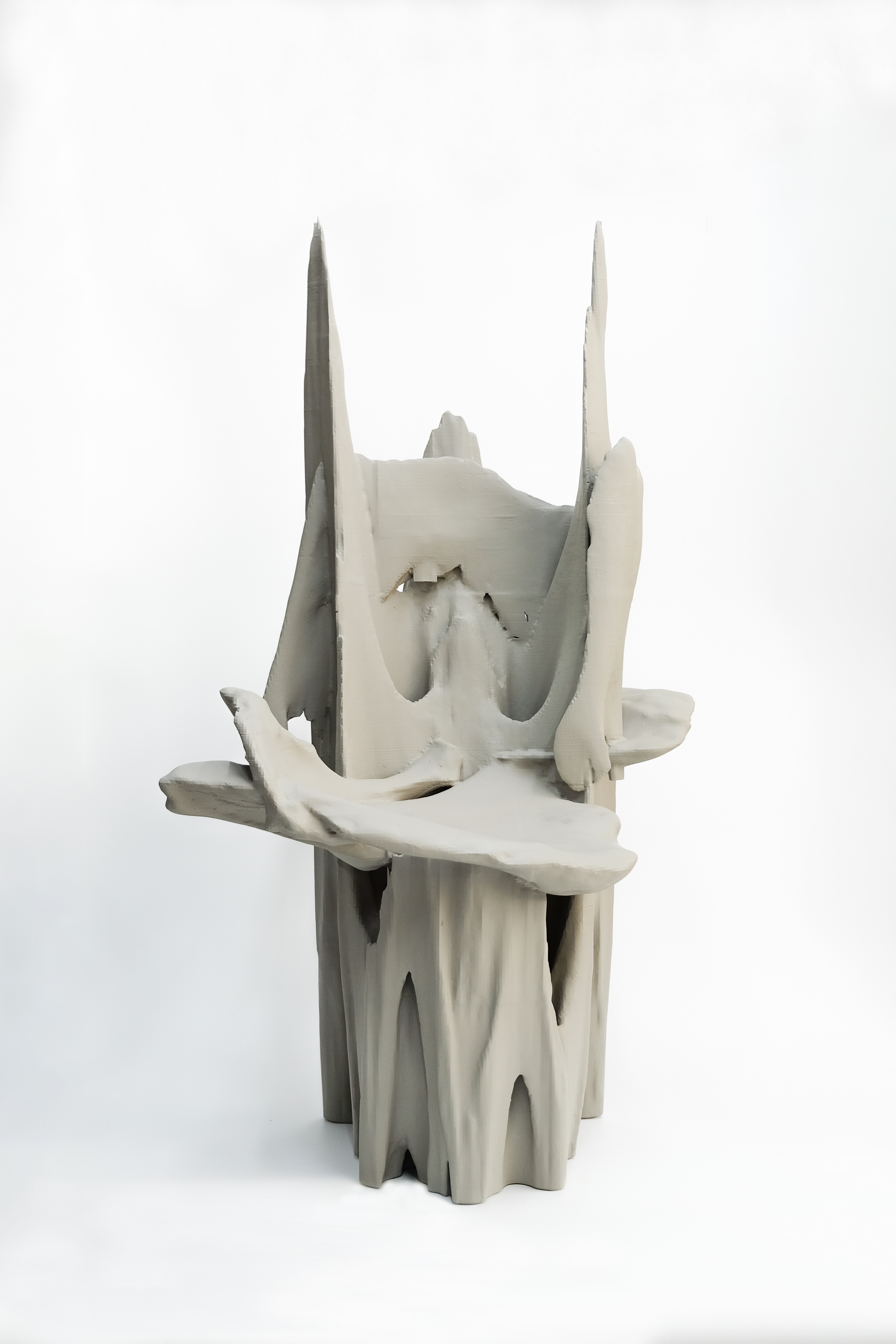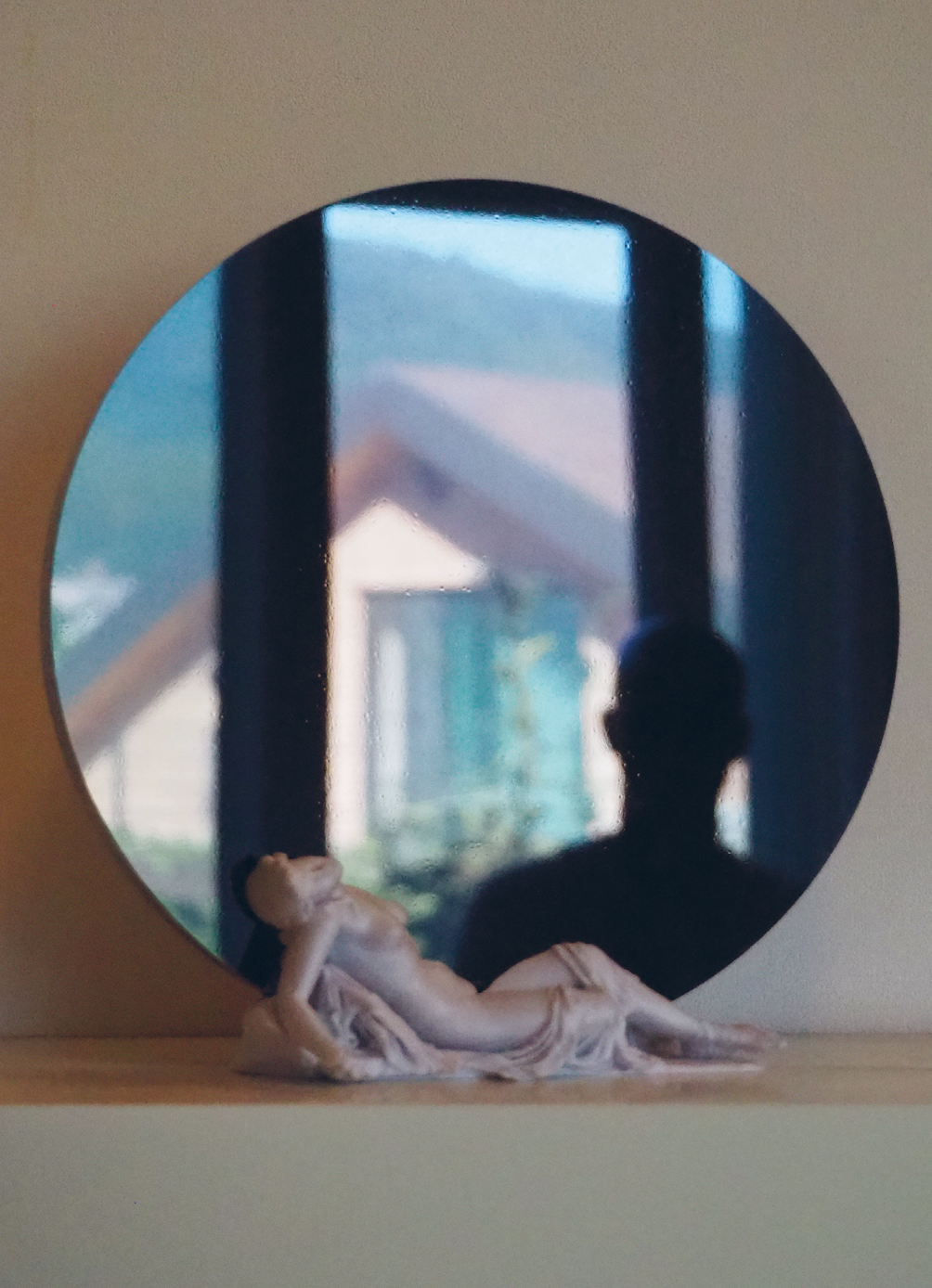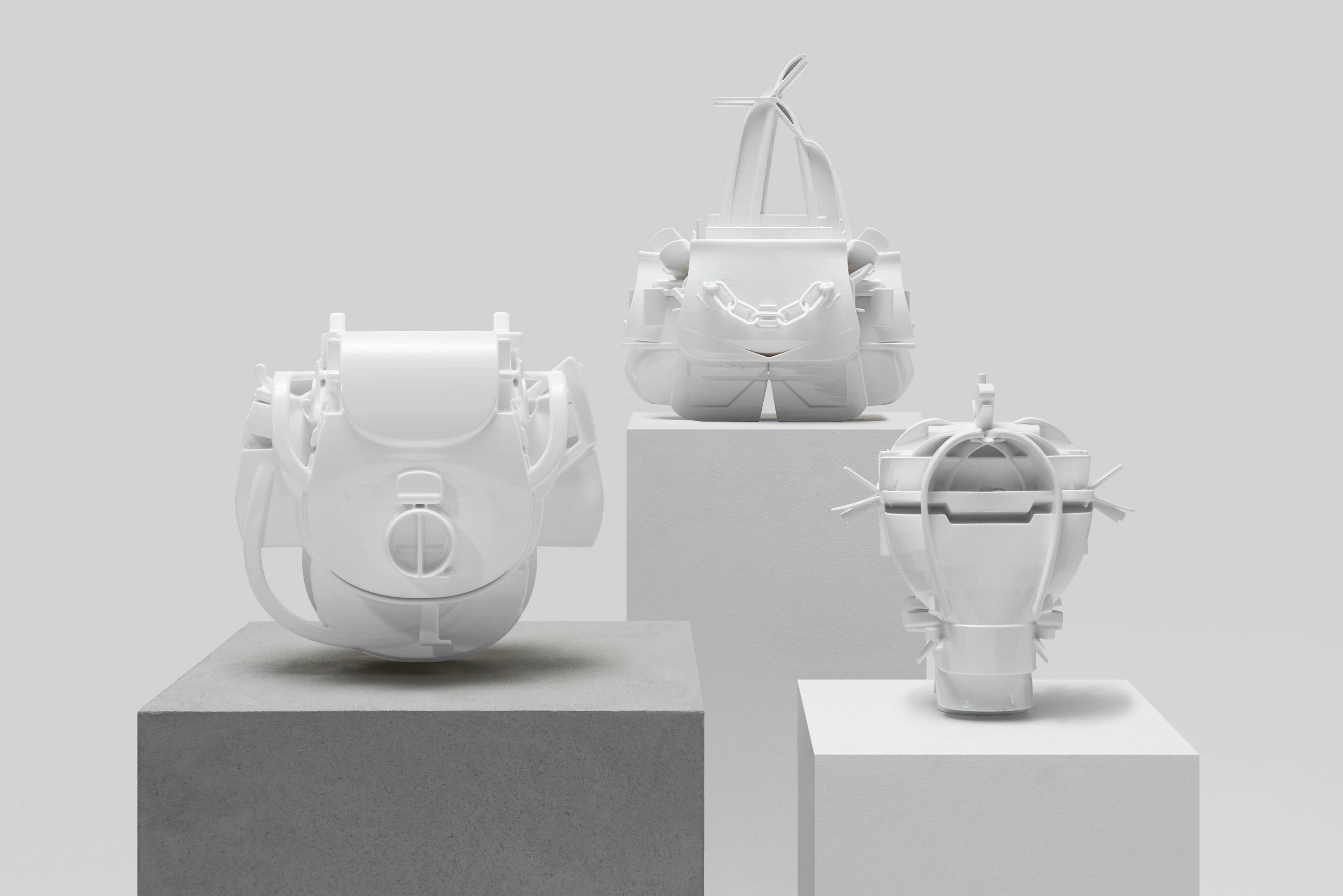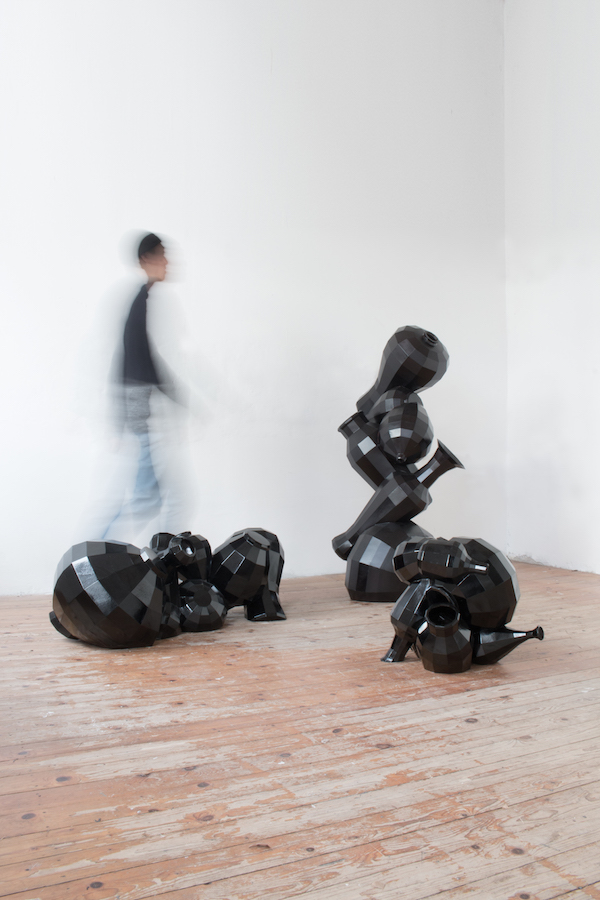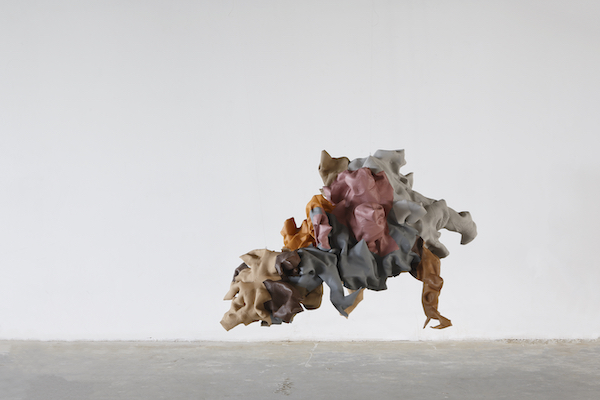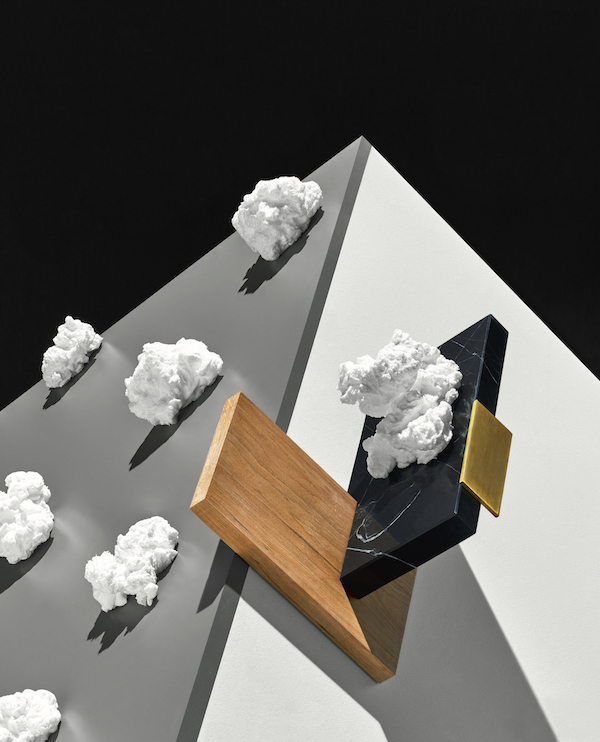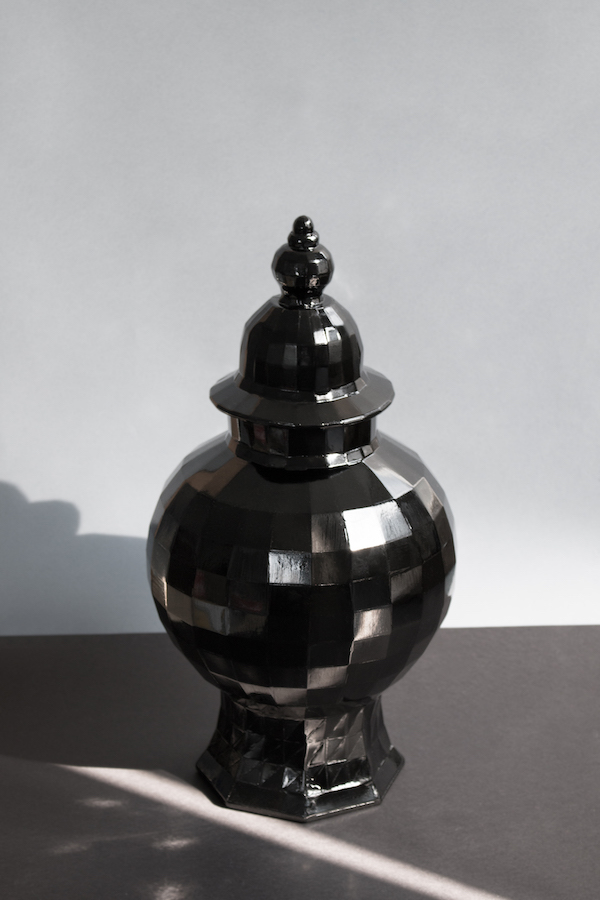
구니스 (Geunies)
19 min 25 sec
Single Channel Video, Color, Sound
2023
*Commissioned by ARKO Art Center

SGS No.1
Clay
2023
650 (W) X 500 (L) X 500 (H)
*Commissioned by ARKO Art Center
![]()
SGS No.2
PLA
2023
450 (W) X 450 (L) X 600 (H)
*Commissioned by ARKO Art Center
![]()
양승빈은 이번 전시에서 김수근 건축가가 왜 의자를 디자인하지 않았는지에 대한 질문을 던진다. 작가는 실재와 허구를 넘나들며 아르코미술관과 김수근 건축가에 대한 사실, 허구, 상상력을 기반으로 촬영한 모큐멘터리(페이크 다큐멘터리) 영상 <구니스와 그 이야기에 대한 증거물로 김수근 건축가가 만들었을 법한)의 의자를 제시하고, 이를 작가의 시각으로 재해석한 의자 SGS No.2>를 제작한다. 영상 <구니스>는 작가가 김수근 건축가에 대해 리서치하면서 발견한 김수근 건축가의 인터뷰 중 그가 제작하려던 의자에 관한 한 줄의 단서에서 출발한다. 작가는 당시 인터뷰를 진행한 인터뷰어를 찾아가 김수근 건축가가 제작한 테라코타(벽돌 재질) 의자는 모종의 이유로 그가 직접 파기했고, 파기된 의자의 일부를 인터뷰어가 소장하고 있다는 이야기를 듣게 된다. 작가는 그의 동의를 얻어 의자의 파편을 조사하고, 파편에 표기된 좌표들을 추적하다가 나머지 두 조각을 아르코미술관과 공간사옥에서 찾게 되면서 파기된 김수근의 미발표 의자 원작을 복원한다.
작가는 다시 가구를 제작하는 양승빈의 자아로 돌아와 모큐멘터리 영상 속 허구의 이야기를 쫓던 '작가'가 발견한 김수근 건축가의 테라코타 의자를 작가의 언어로 재해석한 의자 세 개를 함께 전시한다. 재해석된 의자는 디지털 프로그램을 이용해 아르코미술관의 건축 도면을 변형하고 파괴해 만들어졌다. 조각내기와 붙이기를 통해 기존에 우리가 인식하던 익숙한 건축물과 이미지를 의도적으로 낯설게 하는 의자의 제작 과정은, 과거를 재해석하는 '사변적 고고학'을 바탕으로 '사실에 기반한 허구'를 풀어나가는 작가의 독특한 스토리텔링 방식을 보여준다. 과거의 사료를 새로운 해석과 관념으로 이어지게 하는 작가의 상상력은 과거를 바라보는 새로운 기억의 경로를 만들어낸다. 하나의 단편적인 해석을 와해시키고 총체성을 파기시키는 이 작품은 '일어난 일에 대한 기록으로서의 역사가 아닌 새로운 세계로 문을 열게 하는 열쇠로서 역사와 기억의 관계를 생각해 보게 한다.
글 : 전지영 (아르코미술관 큐레이터)
-
Yang Seungbin began his work with a question: why did the architect Swoo Geun Kim not design a chair? Blending fact and fiction, he shows a mockumentary titled Goonies that examines ARKO Art Center and Kim through a mix of reality, creation, and imagination. As evidence, he presents a chair (that could have been) designed by Swoo Geun Kim (SGS No. 1), building his own chair (SGS No. 2) that reinterprets it from his artistic standpoint. The starting point for Goonies is a single line that Yang discovered while researching the architect: in an interview, Kim mentioned a chair that he wanted to design. Yang tracked down the interviewer to hear more about this. According to that interviewer, Kim produced a terracotta chair but ended up destroying it for some reason or another. Yang also learned that the interviewer still possessed part of the destroyed chair. With the interviewer's permission, Yang examined the fragment, investigating the coordinates indicated on it. Discovering the other two fragments at the SPACE Group Building and ARKO Art Center, he restored the never-before-seen chair destroyed by the architect Swoo Geun Kim.
After following the fictional story in the video, Yang returns to his own identity as a furniture maker, using his own artistic language to reinterpret the terracotta chair discovered by the "artist" in the mockumentary and displaying three versions of the chair alongside his video. The re-envisioned chairs were created by using a digital program to alter and damage the ARKO Art Center's architectural floor plan. The production process introduces a deliberate sense of strangeness, using fragmenting and splicing to alter the familiar structures and images that we recognize. Yang's unique storytelling approach here presents "factually based fiction" reflecting a form of speculative archeology that reinterprets the past. His imaginative approach of relating historical materials to new interpretations and concepts creates a new pathway of memory looking back on the past. Breaking apart a single fragmentary interpretation as it negates "wholeness," the work causes us to reflect not on history as a "record of what has happened," but on the relationship between history and memory as a key opening the door to a new world.
Text : Jiyoung Jeon (Curator, ARKO Art Center)
Clay
2023
650 (W) X 500 (L) X 500 (H)
*Commissioned by ARKO Art Center

SGS No.2
PLA
2023
450 (W) X 450 (L) X 600 (H)
*Commissioned by ARKO Art Center

양승빈은 이번 전시에서 김수근 건축가가 왜 의자를 디자인하지 않았는지에 대한 질문을 던진다. 작가는 실재와 허구를 넘나들며 아르코미술관과 김수근 건축가에 대한 사실, 허구, 상상력을 기반으로 촬영한 모큐멘터리(페이크 다큐멘터리) 영상 <구니스와 그 이야기에 대한 증거물로 김수근 건축가가 만들었을 법한)의 의자
작가는 다시 가구를 제작하는 양승빈의 자아로 돌아와 모큐멘터리 영상 속 허구의 이야기를 쫓던 '작가'가 발견한 김수근 건축가의 테라코타 의자를 작가의 언어로 재해석한 의자 세 개를 함께 전시한다. 재해석된 의자는 디지털 프로그램을 이용해 아르코미술관의 건축 도면을 변형하고 파괴해 만들어졌다. 조각내기와 붙이기를 통해 기존에 우리가 인식하던 익숙한 건축물과 이미지를 의도적으로 낯설게 하는 의자의 제작 과정은, 과거를 재해석하는 '사변적 고고학'을 바탕으로 '사실에 기반한 허구'를 풀어나가는 작가의 독특한 스토리텔링 방식을 보여준다. 과거의 사료를 새로운 해석과 관념으로 이어지게 하는 작가의 상상력은 과거를 바라보는 새로운 기억의 경로를 만들어낸다. 하나의 단편적인 해석을 와해시키고 총체성을 파기시키는 이 작품은 '일어난 일에 대한 기록으로서의 역사가 아닌 새로운 세계로 문을 열게 하는 열쇠로서 역사와 기억의 관계를 생각해 보게 한다.
글 : 전지영 (아르코미술관 큐레이터)
-
Yang Seungbin began his work with a question: why did the architect Swoo Geun Kim not design a chair? Blending fact and fiction, he shows a mockumentary titled Goonies that examines ARKO Art Center and Kim through a mix of reality, creation, and imagination. As evidence, he presents a chair (that could have been) designed by Swoo Geun Kim (SGS No. 1), building his own chair (SGS No. 2) that reinterprets it from his artistic standpoint. The starting point for Goonies is a single line that Yang discovered while researching the architect: in an interview, Kim mentioned a chair that he wanted to design. Yang tracked down the interviewer to hear more about this. According to that interviewer, Kim produced a terracotta chair but ended up destroying it for some reason or another. Yang also learned that the interviewer still possessed part of the destroyed chair. With the interviewer's permission, Yang examined the fragment, investigating the coordinates indicated on it. Discovering the other two fragments at the SPACE Group Building and ARKO Art Center, he restored the never-before-seen chair destroyed by the architect Swoo Geun Kim.
After following the fictional story in the video, Yang returns to his own identity as a furniture maker, using his own artistic language to reinterpret the terracotta chair discovered by the "artist" in the mockumentary and displaying three versions of the chair alongside his video. The re-envisioned chairs were created by using a digital program to alter and damage the ARKO Art Center's architectural floor plan. The production process introduces a deliberate sense of strangeness, using fragmenting and splicing to alter the familiar structures and images that we recognize. Yang's unique storytelling approach here presents "factually based fiction" reflecting a form of speculative archeology that reinterprets the past. His imaginative approach of relating historical materials to new interpretations and concepts creates a new pathway of memory looking back on the past. Breaking apart a single fragmentary interpretation as it negates "wholeness," the work causes us to reflect not on history as a "record of what has happened," but on the relationship between history and memory as a key opening the door to a new world.
Text : Jiyoung Jeon (Curator, ARKO Art Center)
